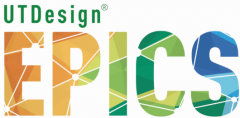
________________________________________________________________________________________________________________
Project Description
This project is a continuation of the goal of building a safer model of stairs for the residents at Legacy Midtown. The Legacy has a bus that transports its residents from one place to another but has a problem with the stairs inside of the bus; it is too steep which can cause discomfort and potential problems. This EPICS project is to provide the task of creating a safer model of stairs that allows the residents to get up safely without facing discomfort or strain.
This long-term project aims to provide a usable and safe model of stairs that will help the residents get up the stairs guarded from danger and ease the discomfort of everyday passengers. Although there are certain time constraints, we are adamant about overcoming difficult barriers to further advance this project.
Partner Information:
Rivae Campos: rcampo@thelegacysc.org
Brian Lovelace: blovelace@thelegacysc.org
Ryan Laub: rlaub@thelegacymp.org
Semester Goal:
- Observe last semester’s prototype; identify the shortcomings and potential improvement
- Scope of the project: Fix the disproportionate step heights, create a stabilization design for the second step, and create a more accurate CAD model.
- Prepare a model for the next semester to come up with a potential final product.
________________________________________________________________________________________________________________
Fall 2023 Team & Responsibilities
Fajr Hussian, Project Lead: Fajr.Hussian@UTDallas.edu
To craft agendas and strategies for project meetings, creating an open and effective atmosphere for sharing experience and knowledge with other team members. Additionally, presenting project team member accountability. Maintaining, tracking, and updating project plan. Guaranteeing the project’s integrity, involving making suitable recommendations for its delivery once it reaches readiness
Mauricio Pineda, Document Manager + Webmaster: Mauricio.Pineda@UTDallas.edu
Will oversee the organization and timely submission of all documents. They will ensure that all team members possess the necessary files for access and future reference within the project. Furthermore, they will promote the adoption of a forward-thinking strategy within the team, fostering the creation of long-term plans for documents such as testing plans and user documentation throughout the project lifecycle.
Will be responsible for the sustainment and update of the project website. Will create one or two pages that entail the monthly description of the project’s progress alongside our semester goal. Will add all necessary information and documentation on the website and make sure they are uploaded in a timely and accessible manner where team members and partners are able to easily access it.
Orlando Silva, Financial Officer: Orlando.Silva@UTDallas.edu
Will be responsible for crafting and overseeing the team’s budget. They will gather budget details from all project teams, consolidate this data using the EPICS budget form, and subsequently present the proposed budget to EPICS administration for endorsement. Additionally, they will manage alterations to the budget mandated by the administration or project needs and monitor team purchases throughout the semester.
Nathaniel Sullivan, Project Liaison: Nathaniel.Sullivan@UTDallas.edu
Will be responsible for keeping track of accounting of the project and getting orders sent out, along with track of budget and any other financial needs. Will be taking on the CAD modeling part for the prototypes and aiding with prototype assembly on this project. Will be responsible for prototype design and iteration
________________________________________________________________________________________________________________
Spring 2024 CAD Design
- Created a 3D model with accurate measurements on Fusion 360
- Organized the assembly board by board and defined each with the appropriate dimensions.
- Included the screw assembly of the design with screw radius and positioning.
- Integrated stabilization design for reducing horizontal and vertical movement. With side stoppers and interchangeable steps
- Design considers dimensions of the bus, thickness of wood, and radius of stoppers.
________________________________________________________________________________________________________________
Notes for Next Semester
- Project partners pointed out the vertical distance of the steps from the bus
could become a potential issue - A rail solution could be a possibility
- Material research for inexpensive stair composition is needed
- Stress simulation on CAD for better analytical analysis




